- Home
- TV History
- Network Studios History
- Cameras
- Archives
- Viewseum
- About / Comments
Skip to content
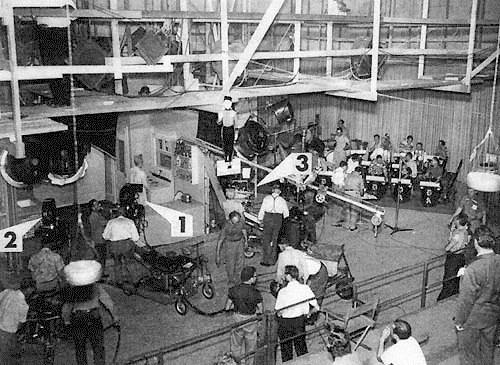

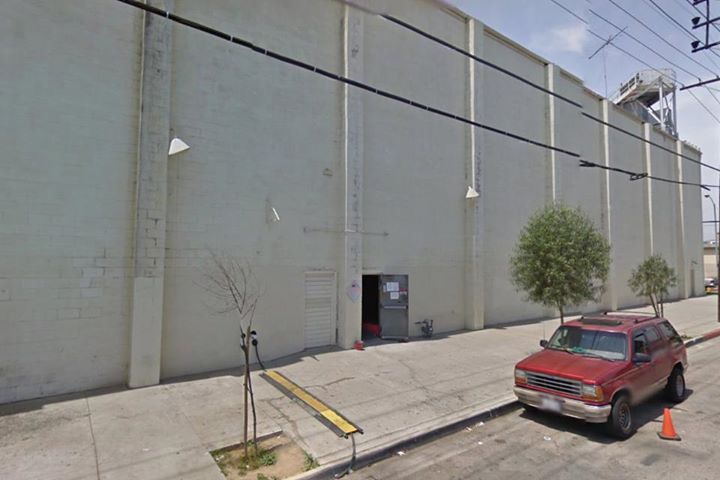



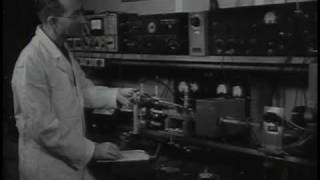

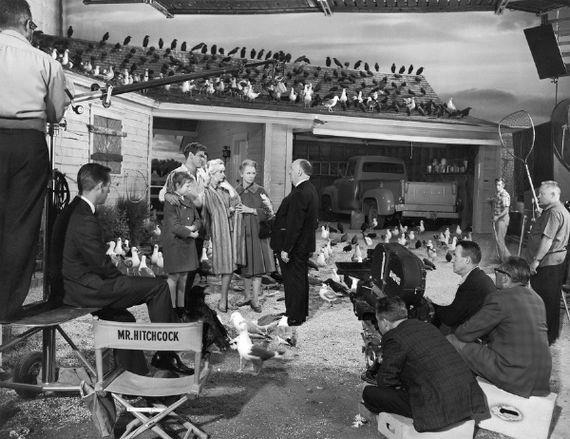

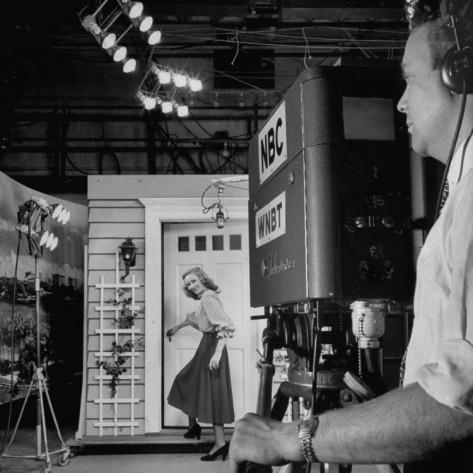







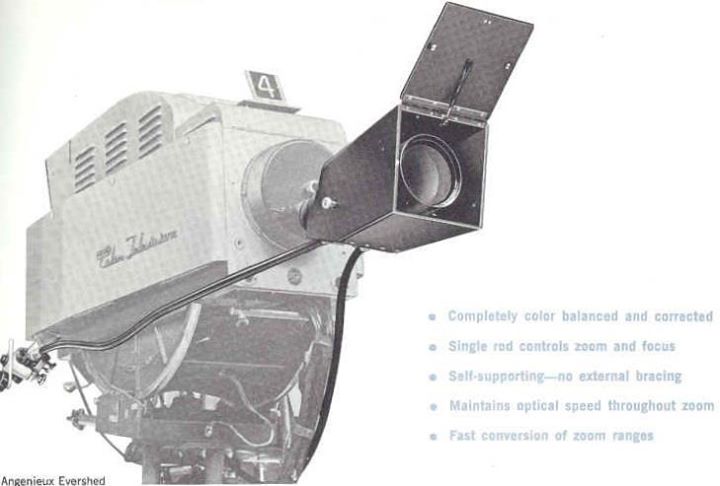



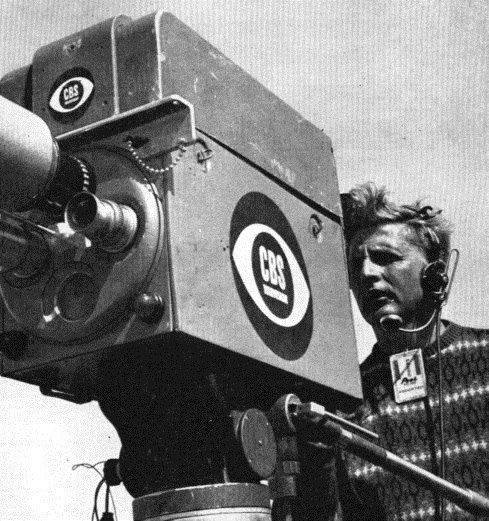

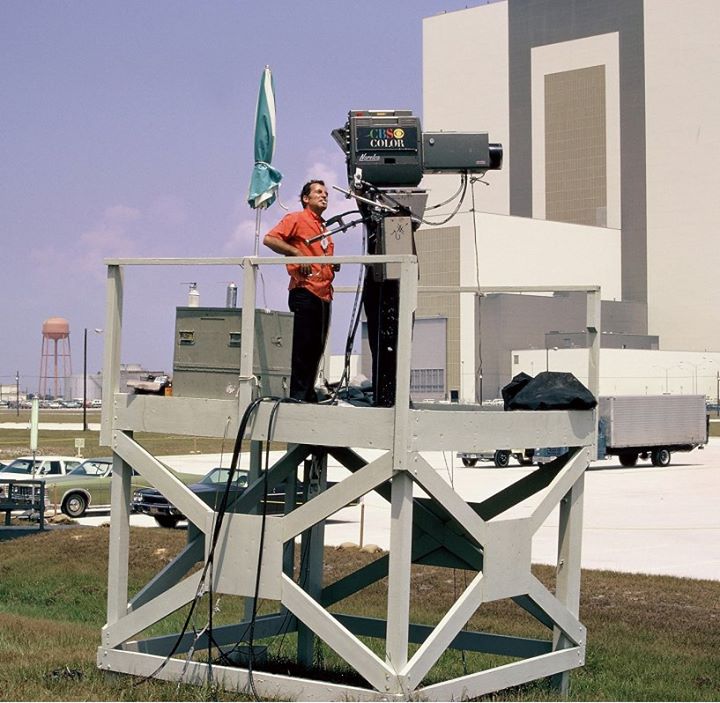



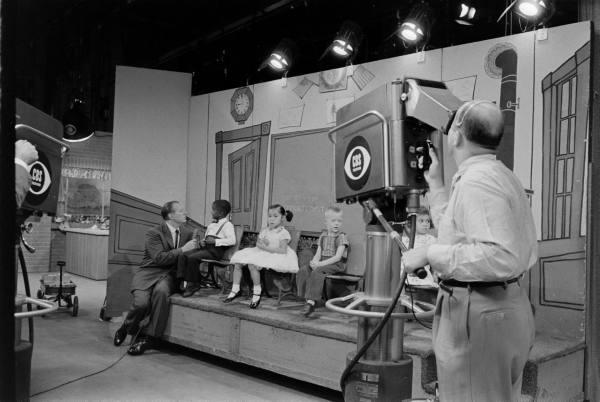

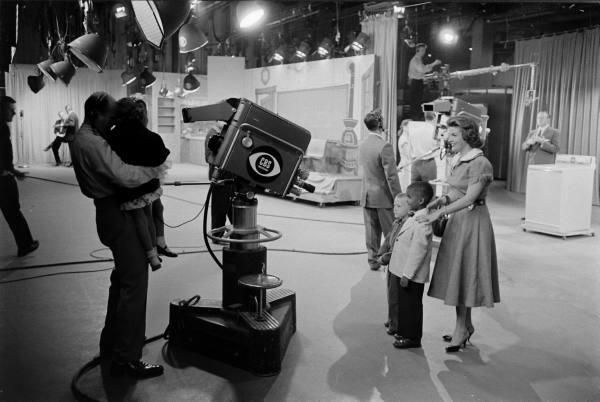





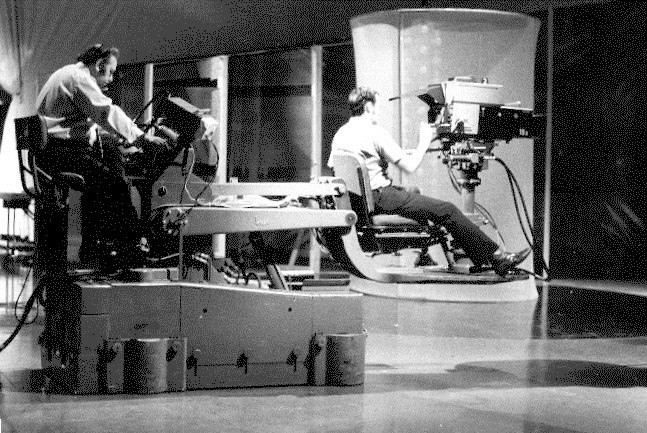

Posts in Category: TV History
Page 128 of 136
« Previous
1
2
3
4
5
6
7
8
9
10
11
12
13
14
15
16
17
18
19
20
21
22
23
24
25
26
27
28
29
30
31
32
33
34
35
36
37
38
39
40
41
42
43
44
45
46
47
48
49
50
51
52
53
54
55
56
57
58
59
60
61
62
63
64
65
66
67
68
69
70
71
72
73
74
75
76
77
78
79
80
81
82
83
84
85
86
87
88
89
90
91
92
93
94
95
96
97
98
99
100
101
102
103
104
105
106
107
108
109
110
111
112
113
114
115
116
117
118
119
120
121
122
123
124
125
126
127
128
129
130
131
132
133
134
135
136
Next » The Man Who Filmed ‘I Love Lucy’, Tells Us How It Was Done.
On October 20, 2012
- TV History
The Man Who Filmed ‘I Love Lucy’, Tells Us How It Was Done.
By: KARL FREUND, Director of Photography
The Lucille Ball-Desi Arnaz show was a challenge from the start. It was decided that, for the first time, TV cameras would be replaced with three motion picture cameras to allow more flexibility in editing and to improve the photographic quality over kinescope recording.
This, I felt, was a legitimate approach to the situation. I expected very little variation from the ritual of photographing regular motion pictures — but I had not taken into consideration the unique problems involved. I was soon to be faced with them.
First of all, a live show requires an audience. This necessitated a regular studio sound stage equipped with bleachers to hold some 300 people. Above the stage a series of directional microphones and loud speakers had to be installed.
To give the audience a clear view of the program, and to allow the cameras total mobility without interference from floor cables, the lights for the sets had to be placed above the stage.
It became obvious almost at once that the overhead light placement was hardly flattering to the photographing of the performers. While the print value seemed up to par when projected in a studio projection room, they showed too much contrast when viewed over a closed TV circuit. Thus, we were faced with the fact that the greatest difference between standard motion pictures technique and TV films is the subject lighting contrast, which is required.
The immediate question was what method we should use to obtain the desired compression in the positive print. The solution was fairly simple. After careful survey, we selected a method that would involve no departure from standard practice in processing laboratory operations. That is, in exposing the original negative, use a subject lighting contrast considerable lower than that normally used for conventional black and white motion picture photography and process both the negative and print in the normal way.
It requires four days to line up each weekly show of “I Love Lucy” and “Our Miss Brooks.” Two of these days are for rehearsals. At the end of the second day the cameraman sees a run-through during which he can make notes and sketches of positions to be covered by the cameras and instructs the electrical crew as to where lights are to be placed. The last two days are occupied by rehearsals with cameras.
Since a show with audience participation must go on at a specified time, this schedule must be religiously adhered to by everyone concerned, including the cast. An hour and a half is the actual shooting time.
To film each show we use three BNC Mitchell cameras with T-stop calibrated lenses on dollies. The middle camera usually covers the long shot using 28mm. to 50mm. lenses. The two close-up cameras, 75 to 90 degrees apart from the center camera, are equipped with 3″ to 4″ lenses, depending on the requirements for coverage.
The only floor lights used are mounted on the bottom of each camera dolly and above each lens. They are controlled by dimmers.
There is a crew of four men to each camera: the cameraman, his assistant, a “grip” and a “cable man.” Unlike TV, where one man generally handles the camera movements and views the results immediately, this technique requires absolute coordination between members of the crew.
Every movement of each dolly is marked on the floor for every scene. And since all the movements of the camera are cued from the monitor box, the entire crew works from an intercom system.
As for myself, I utilize a two-circuit intercom. This allows me to talk separately to the monitor booth and the camera crew on one; the electricians handling the dimmers and the switchboard on the other.
Retakes, a standard procedure on the Hollywood scene, are not desirable in making TV films with audience participation. Dubbed-in laughs are artificial and, consequently, used only in emergencies. Close-ups, another routine step in standard film-making, were discarded since such glamour treatment stood out like a sore thumb.
Guess What This Door Used To Be…
On October 20, 2012
- TV History
Guess What This Door Used To Be…
Here’s a clue: in the 50s, people lined up here to see the most famous of all television shows.
THIS Is A REAL News Team!
On October 20, 2012
- TV History
THIS Is A REAL News Team!
With election night just weeks away, take a look at the CBS team covering the 1964 election. The race was between Johnson and Goldwater and at the Broadcast Center, CBS was ready. L-R, Harry Reasoner, Roger Mudd, Eric Severeid, Mike Wallace, Robert Trout and Walter Cronkite. Unfortunately, they don’t make ’em like they used to!


1954, Television In The Army
On October 19, 2012
- TV History
Now THIS is INTERESTING!
This is a 1954 production by the US Army on their use of Television in the military. There are a lot of different kinds of equipment shown here from RCA, Dumont, Dage more. Some of it is ‘pure army’, but that’s why there’s fast forward, right? Enjoy and let us know what you think. A lens I’ve never seen shows up at 22:27…anyone know what that is? Thanks to David Crosthwait for the link to this “Big Picture” episode.
Some Interesting Production Notes On ‘The Birds’ from Alfred Hirchcock
On October 19, 2012
- TV History
Just for fun, here are some interesting production notes on ‘The Birds’ from Alfred Hitchcok who’s shown here with the stars…the birds. Also shown, Tippi Hedren, Rod Taylor, Jesica Tandy and Veronica Cartwright.
To keep the birds from flying around and on the ground, they were fed a heavy grain and whiskey mix.
The use of standard blue screen techniques for doing matte shots of the birds proved to be unacceptable. The rapid movement of the birds, especially their wings, caused excessive blue fringing in the shots. It was determined that the sodium vapor process could be used to do the composites. The only studio in America that was equipped for this process was the Walt Disney studio. Ub Iwerks, who had become the world’s leading expert on the sodium vapor process, was assigned to this production.
In the scene where Tippi Hedren is running and continually attacked, the birds were actually attached to her coat with nylon thread and were flapping to get loose. Very convincing.
There was no musical score for the film except for the sounds created on the Mixtrautonium, an early electronic musical instrument similar to a Moog.
To make the sound of the birds attacks more frighting, reel to reel tapes of the angry birds was played backward in the mix.
Finally, one ending never shot was a scene showing the Golden Gate bridge covered with birds. That would have been powerful!
Eva Marie Saint…First TV Job, NBC Page
On October 19, 2012
- TV History
Eva Marie Saint: Campus Hoopla
In her fist television job, Eva was a page at NBC. Later she appeared in the 1946-47 show, ‘Campus Hoopla’ on NBC and this is a shot from that set shot for Life Magazine. She went on the movies and won an Oscar for On The Waterfront and appeared in a lot of great movies like North By Northwest, Exodus, The Sandpiper and even played Martha Kent in Superman Returns. Speaking of returns, she returned to TV for roles in Moonlighting and Taxi.
BRAVO! A RESURRECTION!
On October 17, 2012
- TV History
BRAVO! A RESURRECTION!
Congratulations to the CBC! A vintage, Vinten Heron Crane, which was introduced in 1955 is alive and well Montreal. This picture was taken last Sunday, October 16 on the set of a new variety show call “Un Air De Famille” in CBC studio 42. I am sure the gang at Vinten will be proud to see their old crane will still at work in 2012 with a Sony HD 1000 camera on it ! Many Thanks to Sylvain Pichette for the photo and update. I’m sending this to Vinten now.


50 Years Ago: The Edge Of Nuclear War!
On October 16, 2012
- TV History
50 Years Ago: The Edge Of Nuclear War!
October 15 through October 27, 1962 the world passed 13 tension filled days not knowing if we would live or die in a fireball. This astounding photo, and others are from a great pictorial in The Atlantic Magazine on The Cuban Missile Crisis. This was the scene in the Oval Office on the 22nd when President Kennedy addressed the nation on the seriousness of the situation in Cuba. Thanks to Walt Palmer.
http://www.theatlantic.com/infocus/2012/10/50-years-ago-the-cuban-missile-crisis/100387/
The Rank-Taylor-Hobson Zoom Lens
On October 16, 2012
- TV History
The Rank-Taylor-Hobson Zoom Lens
By far, this was the most popular zoom for RCA TK41s and TK60s. The Zoomar was also very popular, but that was seen mostly on black and white cameras in use prior to the mid 60’s introduction of this lens. This is often refereed to as the Varotal III and Varotal V. The Mark V model is for studio use and the Mark III for outside.
Varotal Lenses (From the RCA Product Catalog)
The Studio Varotal V and Outdoor Varotal III are variable focal length lenses designed to cover the full range of focal lengths normally used for television programming. By eliminating the need to switch to a second camera for change of lens turret position, the Varotals provide means of producing a variation of close-u p and distance “shots” with only one camera. The lenses enable observation of detailed processes without the loss of continuity entailed in changing lenses. In addition, dramatic effects may be obtained by “zooming” from a distance shot to a close-up of one portion of the scene, or from a close-up view to a distance shot.
Outdoor Varotal III
The Outdoor Varotal III Lens has been designed for versatile use in studios or on remotes. It features a unique dual range change from 4 to 20 inches and from 8 to 40 inches by means of a small lever on the lens without change of rear element or loss of picture focus. High quality definition is achieved and the lens is fully color corrected and designed for use on both color or monochrome cameras. Minimum object distance for which the entire zoom range is available is twelve feet, and a close-up adaptor is available for reducing the minimum object distance to six feet.
The zoom and focus controls for the Varotal III are combined in a lever mechanism which mounts on a bracket attached to’ the rear of the camera. The controls are mechanically coupled to’ the lens by means of a pair of flexible cables and a precision gearbox which is mounted on the lens. Zoom control is provided by rotation of the lever.
Focus control is provided by rotation of a knob mounted an the zoom control lever. The direction of rotation of the focus knob, with respect to focusing action, corresponds to that of the regular camera focus knob, for ease and familiarity of operation.
An adjustable friction brake is provided to vary the amount of pressure required to operate the zoom control in accordance with individual operator preference. This brake may also be used to lock the zoom control at any desired point within the zoom range.
Varotal V
The Varotal V is a new Zoom lens with a focal length range of 1.6 to 16 inches and a relative aperture of f/4.0 to f/22.0 throughout the zoom range. The focal length and optical speed of this lens make it suitable for both studio and outside broadcast use. The linear iris mechanism conforms to all requirements for adjustment by an iris motor drive system or manual operation.
The separate zoom and focus control of the lens are mechanically coupled to the lens by two separate flexible cables. The zoom mechanism is mounted on a bracket at the right rear of the camera, and a lever on this control adjusts the focal length of the lens. A knob is attached to this lever for adjustment of zoom friction and may be used to lock the iris at any point within the zoom range.
The zoom mechanism is a dual speed device which has two output couplings permitting a choice of zoom speeds by attaching the control cable to the desired output coupling. The focus control handle is attached to the camera pan and tilt head handle at left rear of the camera and is coupled to’ the lens by a flexible cable. The Varotal V lens requires a field lens when used on a TK4I Color Camera.
Three range extenders and a close-up adaptor are available as accessories for the Varotal V. The extenders change the range of the basic lens to 2.4 to 24 inches, f/6.0; 3.2 to 32 inches, f/8.0; and 4.8 to 48 inches, f/12.0. The close-up adaptor has a minimum object distance of three feet.
The Varotal III and V are mounted on the RCA TK-11, 31 and TK-l4 monochrome TV Cameras by means of a special mounting plate which is readily installed in place of the standard camera turret. Either lens may be mounted directly on the TK-60 camera turret. Control cables and a suitable mounting bracket for the zoom and focus control mechanism are supplied with the lens. Ordering information should specify the type of RCA camera on which the lens is to be mounted.
Angenieux Evershed Lens This is the ‘box zoom’ lens
On October 16, 2012
- TV History
Angenieux Evershed Lens
This is the ‘box zoom’ lens made by Angenieux but it was very rare to see one of these in the US. The Rank-Taylor-Hobson zoom lenses were more common here on RCA cameras, but occasionally you saw one, as on the WDAF camera in the photo just before this.
Among The First!
On October 16, 2012
- TV History
Among The First!
These ladies are among the first to ever see themselves on Television. As part of the 1939 World’s Fair exhibition, RCA fed video and audio from this podium for most of the summer. The lines were long, and those ‘televised’ were given a certificate with the date and the place.
Classic CBS! Dennis ‘Paddy’ McBride…From Sullivan & Gleason To Sports
On October 15, 2012
- TV History
Classic CBS
This is the late Dennis ‘Paddy’ McBride in command of a TK30. For many years, Dennis was one of the top cameramen for CBS. His specialty was sports and he won several Emmys for his work which included zoom lens techniques. Great photo.
CLASSIC NASA! This CBS PC60 is ready for lift off.
On October 13, 2012
- TV History
CLASSIC NASA!
This CBS PC60 is ready for lift off. This is probably around 1967 or ’68 and we are either near the end of Gemini missions or at the start of the Apollo missions. If the top looks odd, it’s because the door on the far side of the camera is open. Notice the custom tilt head which allows the camera to shoot almost straight up. Great days these were! Thanks to John Bisney in Bethesda MD for the photo.
CBS Modified RCA Cameras Into Color Cameras
On October 12, 2012
- TV History
Side By Side
On the left, the regular RCA TK30 monochrome camera, on the right, the CBS Field Sequential Color camera. As you can see, the color camera is a modified TK30. I’m sure that are some electronic mods, but notice the new box above the lens turret. That is the access to the red-green-blue spinning wheel that comes between the lens and the IO tube.
CBS Television City: ‘Kids Say The Darnedest Things’
On October 11, 2012
- TV History
CBS Television City: ‘Kids Say The Darnedest Things’
This segment of the Art Linkletter House Party is the most famous of all. Linkletter interviewed schoolchildren between the ages of five and ten. During the segment’s 27-year run, Linkletter interviewed an estimated 23,000 children. The popularity of the segment led to a TV series with the same title hosted by Bill Cosby on CBS-TV from January 1998 to June 2000.
‘Art Linkletter’s House Party’ premiered on CBS television on September 1, 1952 and had become television’s longest-running daytime variety show by the time it completed its run on September 5, 1969. It ran first at 2:45 p.m. EST for only fifteen minutes, but by February 1953 it aired from 2:30 p.m. to 3:00 pm, remaining in that time slot for 15 years. It became a morning show titled The Linkletter Show from 1968 to 1969.
CBS Television City: “Art Linkletter’s House Party”
On October 11, 2012
- TV History
CBS Television City: Art Linkletter’s House Party
Here in Studio 41, Art is doing a last minute run through on a Maytag live spot in the background. In the foreground, the children from the interview segment are made comfortable with the studio’s activity. Behind this TK11 is the ‘school days’ set for the ‘Kids Say The Darndest Things’ segment, and other sets for the sit down and kitchen segments.
CBS Television City: Studio 41
On October 11, 2012
- TV History
CBS Television City: Studio 41
Each day on the ‘Art Linkletter House Party’, there was a segment where kids were interviewed. It was called ‘Kids Say The Darndendest Things’. That was always funny, but before the show they were always given a complete tour of the set to make them more comfortable. Here, they are looking at where some of the days Q Cards are kept.
CBS Television City: Studio 33, Show prep for the lighting crew
On October 11, 2012
- TV History
CBS Television City: Studio 33
Show prep for the lighting crew. Off in the distance is a TK11.
The Vinten Heron Crane: 1955
On October 10, 2012
- TV History
The Vinten Heron Crane: 1955
The Vinten Heron crane was developed for the BBC, which bought models for its London and regional studios. The biggest innovation in the crane was it’s ability to crab, thus allowing it to move freely in any directions, giving it the flexibility of a pedestal with increased height range and speed. This shot is from Radio Canada and there were a few in use at CBC and some here. I think WFAA in Dallas had one. Wonder where they all went? Anyone know of a survivor?
Page 128 of 136
« Previous
1
2
3
4
5
6
7
8
9
10
11
12
13
14
15
16
17
18
19
20
21
22
23
24
25
26
27
28
29
30
31
32
33
34
35
36
37
38
39
40
41
42
43
44
45
46
47
48
49
50
51
52
53
54
55
56
57
58
59
60
61
62
63
64
65
66
67
68
69
70
71
72
73
74
75
76
77
78
79
80
81
82
83
84
85
86
87
88
89
90
91
92
93
94
95
96
97
98
99
100
101
102
103
104
105
106
107
108
109
110
111
112
113
114
115
116
117
118
119
120
121
122
123
124
125
126
127
128
129
130
131
132
133
134
135
136
Next »